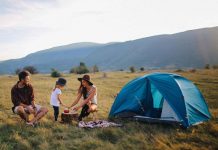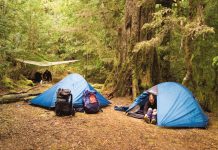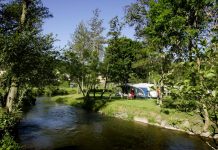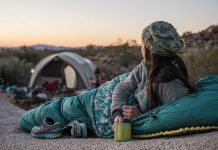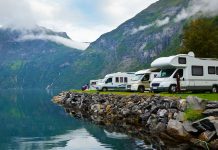Campers and hikers want to stay warm and dry no matter what the weather conditions are, but especially in the winter hypothermia can be fatal. It’s a good idea to take clothes that can wick moisture, insulate, dry quickly, and are waterproof, breathable, and windproof. You can regulate how much warmth you need by adjusting your clothing.
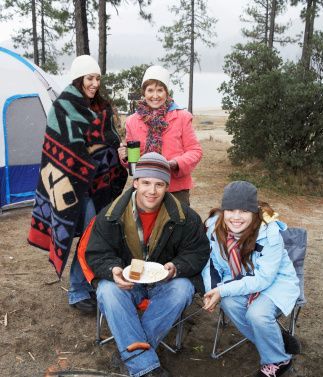 When traveling outdoors in the winter it’s a good idea to wear three basic layers of clothing. Your base layer is actually your undergarments, which lie next to your skin.
When traveling outdoors in the winter it’s a good idea to wear three basic layers of clothing. Your base layer is actually your undergarments, which lie next to your skin.
Merino wool and synthetic materials are the best while you should stay away from cotton. These materials are designed to keep perspiration from the skin and wicking it away to the outer layers of the clothing where it should evaporate.
A good base layer should fit snugly but shouldn’t be constricting. If it’s really cold you might want to wear two base layers. These could be a lightweight layer with a thicker one on top.
Your middle layer of clothing is known as the insulating layer. This material should also wick the moisture from the body to keep you dry, but its main job is to keep your body heat in. Some good ideas are micro fleece pants, shirt and jacket and/or a goose down jacket.
Your outer layer, also known as the shell, is the one that’s going to be in direct contact with the elements, and hence needs to be windproof and waterproof one.
Clothing that’s made out of laminate materials, like Gore-Tex or polyurethane are generally good choices.
Try and find clothing that has underarm vents and core vents because they help reduce moisture and excess heat. If you stop to have a break, don’t try and cool down too much because that’ll mean your body needs to work hard to warm you up again.
The boots should be well insulated and waterproof. Remember, if you plan on doing any snowboarding and skiing you’ll need to wear boots which are made for those activities. A hat is always a good idea since a lot of body heat can be lost through your head. A windproof hat is the best. Mittens and gloves are also essential and it’s recommended to take an extra pair or two in case they become wet.
Breathable and waterproof gaiters should be taken to help keep your boots free from the rain and snow. Glasses and goggles can shield your eyes against the wind and sun and socks should be thin and snug next to your skin with a thicker pair over top. These should also be made from wicking materials or merino wool.

